CANADA 2006 & Bob Scafe's Insulator Ranch - Part II
Reprinted from "Crown Jewels of the Wire", December 2006, page 32
(Caution - LARGE DOWNLOAD)
Collins Line
No insulator tour of British Columbia could be complete without reference to
the Collins Line. Western Union, in an effort to connect telegraph service
between America and Europe, attempted to construct a telegraph line through
British Columbia, Alaska, and Siberia starting in 1864. The project was halted
after the Trans-Atlantic Cable was laid in 1866. By then, though, hundreds of
miles of telegraph line had been constructed and put into service. At the
Merritt swap meet, Aidan Morgan displayed insulators and insulator shards found
during three decades of hunting along the line.

Insulators, and pieces of insulators, found along the Collins Line and branch
lines include CD 735 Tillotson's (above), CD 735 Chesters (below), CD
735 Mulford & BiddIes, CD 734 McMickings, CD 123 EC&M's, CD 130 Cal Elec
Works, and CD 130.1 Cal Elec Works (both cobalt & aqua). Threaded insulators
were likely replacement insulators on sections of the line that remained in
service after Western Union abandoned its trans-world effort.

Take note of the tie wire on the insulators shown. Many are found with wire
attached. In fact, the wire often leads to their discovery as collectors have
learned that metal detectors are an indispensable tool in insulator hunting.
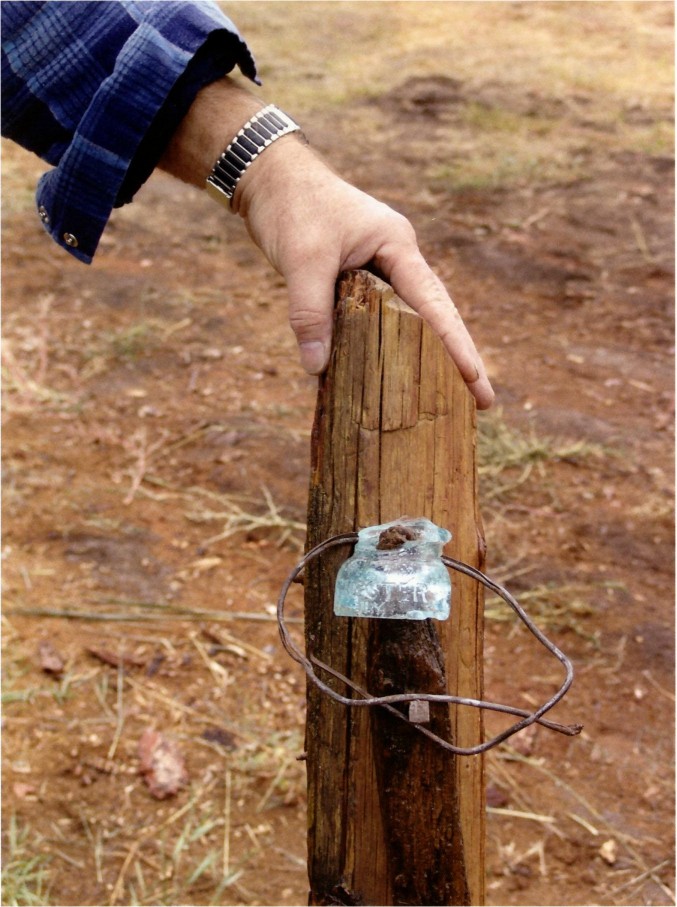
Historic artifacts. Here Aidan Morgan displays some of the history found
along the Collins Line. There's a section of original pole, a fairly intact
threadless side pin, a broken CD 735 Chester and a piece of telegraph wire.
Note the separation of the wire at the top of the loop. Early telegraph wire,
such as that used on the Collins Line, was "rolled wire", that is two
flat pieces of wire rolled together. If you are on a hunt and start finding that
kind of wire, you know you are on to something old. Linda & I had a great
time at the Merritt swap, and recommend it to anyone. But our Canadian
adventures were just beginning....
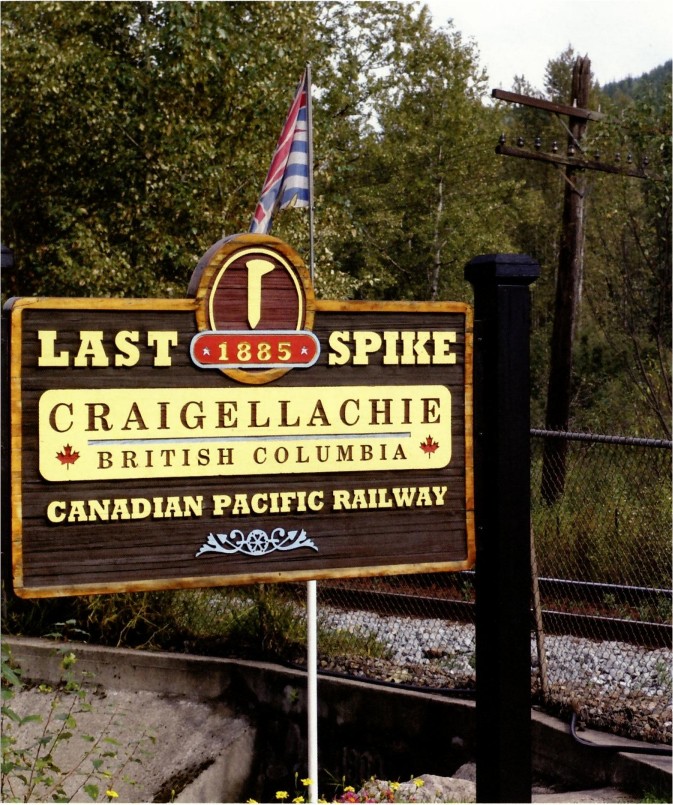
Transcontinental Railroad
Leaving Merritt we headed north to Kamloops, and then east on Canada's
transcontinental Highway #1. In this part of British Columbia, the route is the
same as Canada's transcontinental railroad.
In Canada, the railroad was constructed somewhat on blind faith. The railroad
was progressing westward at a rapid pace, but no route had yet been found across
the mountains. While it was known there was a passable route hundreds of miles
to the north, the Canadian Pacific Railway needed a more southerly route to
reduce competition from American railroads. A man named Albert Rogers finally
discovered a pass in 1882. Construction gangs could then work from both
directions, and the last spike was driven at Craigellachie on October 8, 1885.
THREE VALLEY LAKE
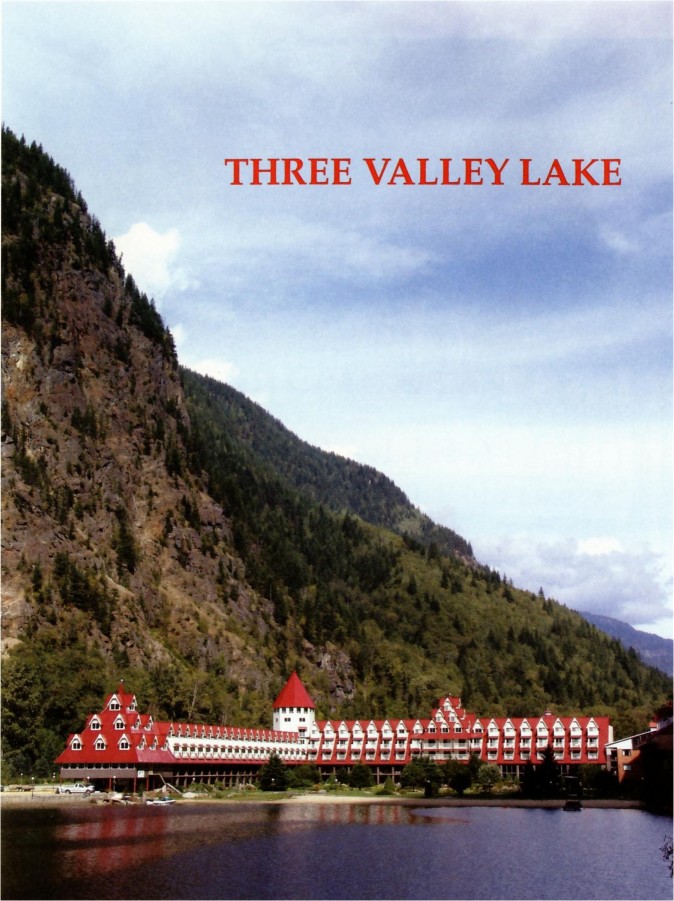
A dozen miles west of Revelstoke is the striking Three Valley Lake Chateau.
The dream of Gordon Bell, the chateau is much more than just a dramatic resort.
This place is a repository of historical artifacts of Western Canada. From
original buildings to antique automobiles, trains and rolling stock, many
historical objects have been saved from destruction or "progress" and
brought to this location.
When you drive through the area, plan to stop at the chateau and visit the
Heritage Ghost Town. Oh, and don't forget to check out the extensive collection
of insulators displayed in the museum.
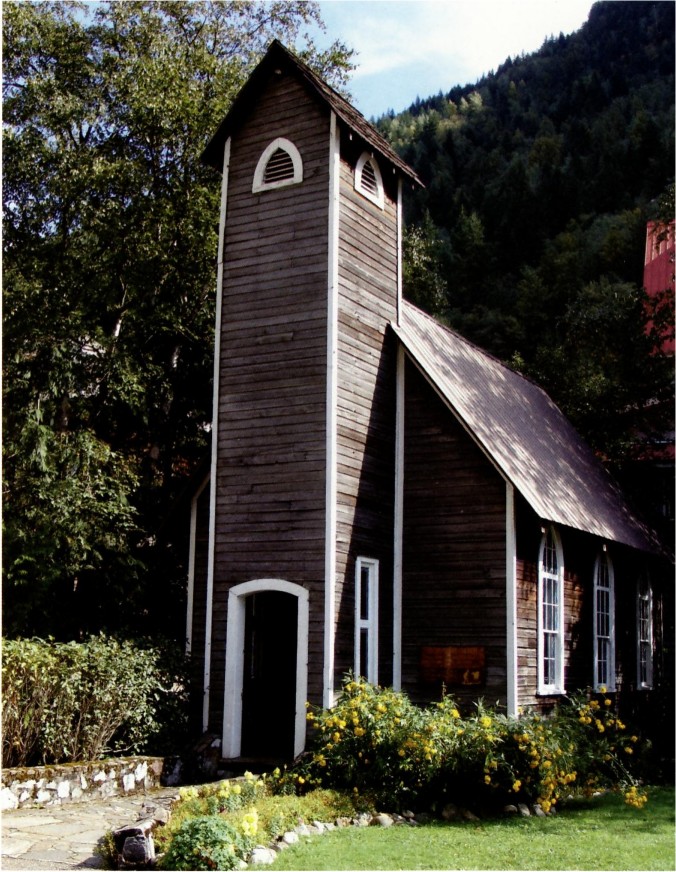


Trains Run Over It No More
Rogers Pass, where the Canadian Pacific eclipsed the continental divide and
united Canada, is silent today. No train whistles can be heard. No sounds of
iron wheels on iron tracks. Cars and trucks, yes. But trains? No where in sight.
That's because the tracks are underground. When an avalanche killed 70
railroad workers in the early 1900's, the railroad tunneled deep beneath the
pass to avoid future disasters. The tunnel resulted in miles of abandoned
tracks. Telegraph poles standing since 1885 were felled like timber and left to
nature.

The tourist town of Glacier was no longer convenient to get to. The once
bustling resort community fell into disuse, then disrepair and finally
dismantled altogether. Today, the old railbeds are paths for tourists to hike
and imagine days gone by. Were the CD 143's that once were on the poles royal
purple in color? One can dream.

Coming or Going?
The train going north into the tunnel above is the same train coming out of
the same tunnel heading west 270-degrees later. This is part of a figure-eight
of two tunnels. If a train is long enough, it can actually be traveling west,
north, east, south, west, north, east, north again, east again, south and west
all at the same time.
Before the Spiral Tunnels were built, extra locomotives were needed to haul
trains up and down a 4.5% gradient. The location is in Kicking Horse Pass near
Field.

Banff National Park
Arguably, one of the most beautiful stretches of railroad tracks anywhere is
along the Bow River in Banff National Park, Alberta.
Even with poles and insulators removed, the scenery is still worth taking
note.
In Banff, most people are familiar with Lake Louise. We found another crown
jewel that captured our attention and our hearts. Just a few miles from Lake
Louise is Moraine Lake with turquoise blue waters, much smaller crowds, and a
greater sense of solitude.
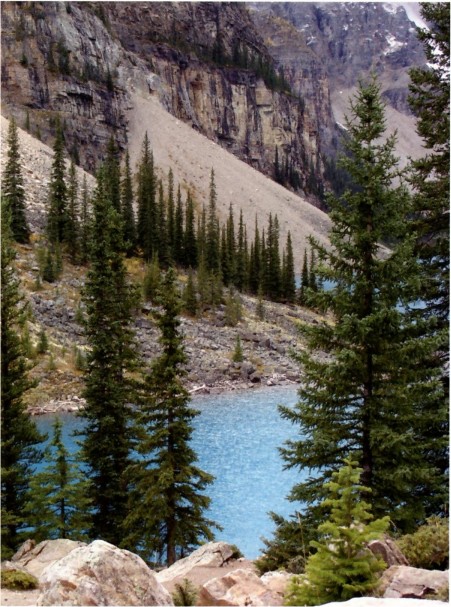
Lost Line
Not far from Moraine Lake we spotted fallen poles on some talus slopes. Too
steep and rocky to climb down to satisfy our curiosity at that location, we
drove to a timbered area.
Sure enough, we found an abandoned line with two wires, two sidepegs and two
insulators running tree to tree through the woods (look about half-way up the
tree on the right). We only walked three trees down the line, but all the
insulators we saw were CD 154 Dominion 42's in straw colored glass.
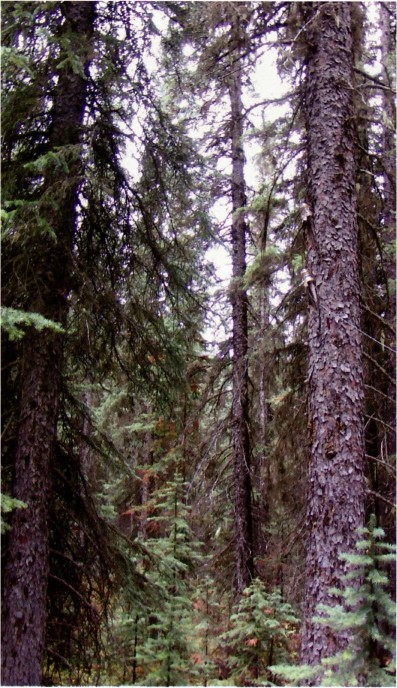
Near the city of Banff is a ghost town, a former coal mining center. Historic
photos from the early 1900's show dozens of power and telephone poles. To reduce
the chances of a spark setting off an explosion inside the mines, the ore trains
(below) were powered by compressed air.


We started our Canadian adventure camping in a tent. As inclement weather
moved in we began staying in motels and camping cabins. We held out hope of
using our tent again towards the end of the trip. But the forecast for September
14th called for rain, so we chose another motel room. As you can see the
forecast was wrong, but I think we made the right decision.
Local residents told us it can snow any month of the year in Banff. It's no
wonder that, despite global warming, only 50% of the fresh water in Canada can
be found in lakes and rivers. According to National Park Service employees, the
rest remains locked up in glacial ice.

Linda & I wish to thank Bob & Bev Scafe (that's Bob above) for
their hospitality in hosting the Merritt Swap Meet and for giving us advice on
sights to see and places to go on our Canadian adventure.
Howard & Linda Banks
| 